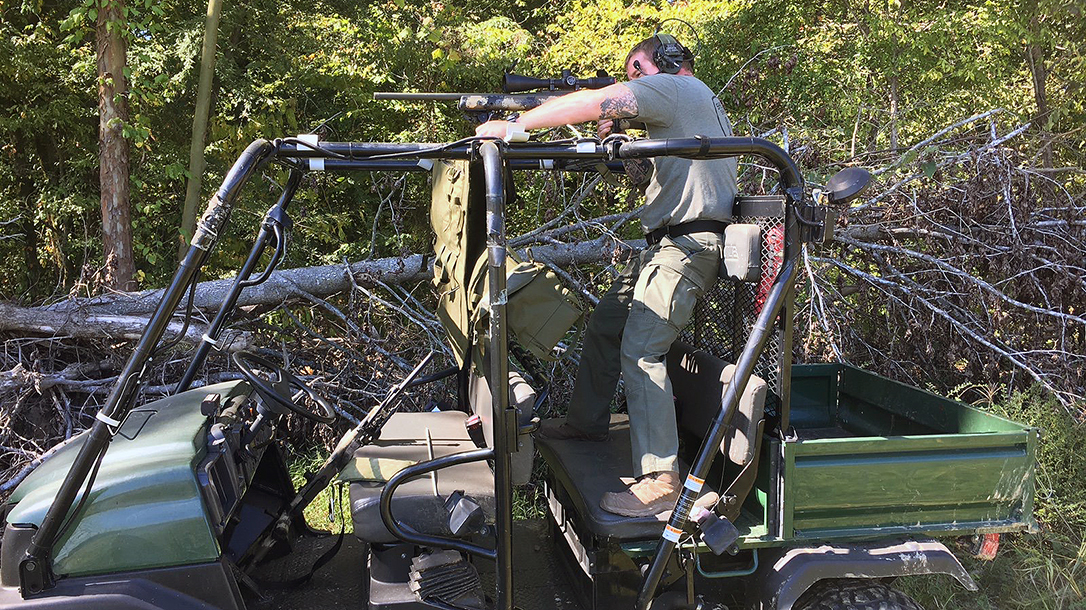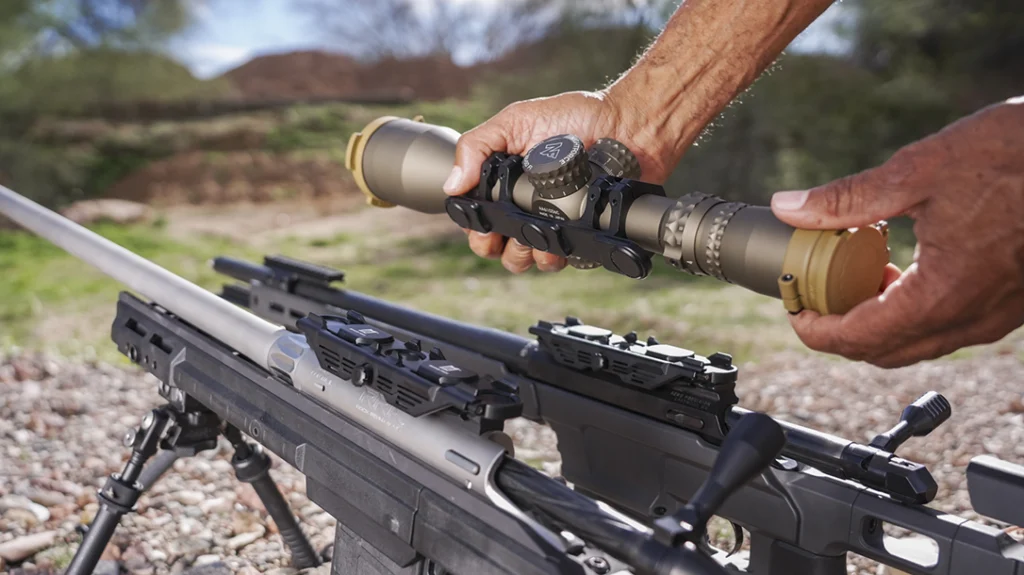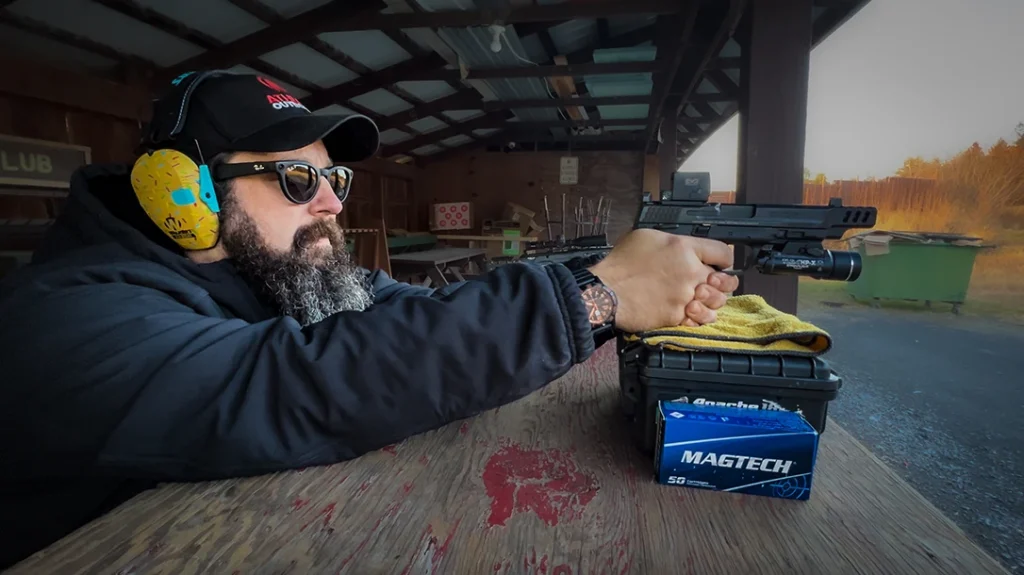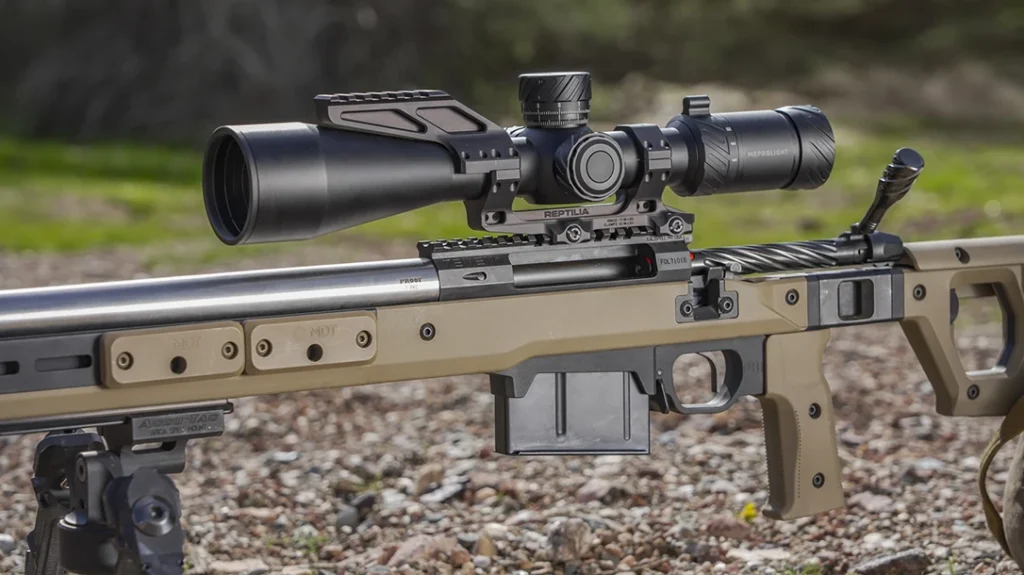In the south, deer hunting is an obsession. A fixation that ranks right up there with SEC football and sweet tea, and when it comes to acolytes, you won’t find a more fervent follower than my brother-in-law. Every season he would beg me to go, and every season I would find a way to put him off. It wasn’t that I had a moral objection to hunting. No, the fact was I hated waking up early, and that combined with my job as the sniper team leader for our county’s SWAT team, made it all seem—well—it made hunting seem kind of unfair.
A SWAT Sniper Hunter
Still, my brother-in-law persisted until I finally agreed to go.
We woke up the next morning at zero dark thirty and drove south to Mississippi, my brother-in-law in his top-of-the-line hunting gear and me in a pair of faded woodland BDU’s and an orange traffic vest. Not having a deer rifle, I brought my PRS rig: a custom .260 Remington with a Bartlein barrel, Manners Chassis and a Bushnell DMR II 3.5-21×50 scope.
Advertisement — Continue Reading Below
I’ve shot a lot of bolt guns in my time, but that .260 was a tack driver, and with a magazine of handloaded 123-grain Amax’s more than capable of shooting big holes at 1,000 yards. It was also heavy. I’m talking BAR heavy, and by the time I made the walk from the truck to my hunting blind I was smoked.
In the Blind
Eventually the sun cracked the horizon and as the first light played through the trees, I took stock of my position. The blind was a converted shipping container spray painted camo and nestled in the wood line south side of an old bean field. It was a good spot, with a clear lines of fire, and like any good sniper, I got to work on a range card.
Using my range finder, I noted the distance to prominent terrain features: a puddle of delta mud at 200 yards. An old stump at 325 and the opposing tree line at 400. Putting my sniper brain to work, I figured my target’s most logical approach would be from the thicket 200 yards to my left and checked the DOPE card taped to the side of the stock.
Advertisement — Continue Reading Below
The tape gave me a -.4 Mil drop at 200 yds—a chip shot for the .260— and I decided to use my holds instead of dialing any elevation. Up to that moment I had assumed a day in the woods would be similar to a day at the range, but as soon as I deployed my bipod legs, I realized that wasn’t the case. Besides being heavy, the .260’s 22-inch barrel was way to long for the confines of the shipping container and the metal too narrow to support the bipod legs.
Well, dammit. Now what am I going to do?

Advertisement — Continue Reading Below
Go Time!
After banging the rifle around for a few minutes, I found a little ledge from which I could manage a half standing, half kneeling position. I was still trying to get comfortable when I heard the boom of my brother-in-law’s .270 from the rear followed by what sounded like a herd of elephants rushing through the underbrush.
It was go time.
Dropping my eye to the scope, I swung the rifle left in time to see a MASSIVE deer burst from the shadows and haul ass towards the opposite wood line. Got you. Muscle memory kicked in and I settled the reticle over the target and took a breath, letting it out slow as my finger curled around the trigger. The rifle boomed and the scope recoiled skyward, my right hand working the bolt as I shouldered the .260 back onto target, but there was no need for a second shot.
Advertisement — Continue Reading Below
Five minutes later I was standing out in the field wondering why the doe at my feet looked so small. A glance down at the scope’s maxed out magnification ring provided a quick answer. Dammit.
My brother-in-law moved in beside me and looked down, a look of disgust sliding across his face.
“It looked bigger through the scope,” I told him.
Advertisement — Continue Reading Below
“It’s not the size,” he said.
“Then what’s the problem?”
“You shot it in the head. Hunters don’t like that.”
Advertisement — Continue Reading Below
“Good to know.”
It has been almost seven years since that hunt, and while I still don’t know why deer hunters generally frown on headshots, I have honed my craft. Melded the tactics, techniques and procedures I used as a sniper and applied them to becoming a better hunter.

Advertisement — Continue Reading Below
SWAT Sniper Hunter Lesson 1: Less is More
Thoughts on weight, barrel length and magnification.
Despite most law enforcement sniper shots take place within 200 yards, when it comes to training it seems like all ANYONE cares about is that LOOOONG Shot. Maybe for competition you need to be able to make that 1,000-yard shot, but in the real world? C’mon. Seriously?
Now I’m not judging anyone. Far from it. In fact, when I decided to buy a dedicated hunting rifle, I was so obsessed with being able to take down a deer at ANY range, that I went with a custom .280 AI. On paper, the .280 AI checked all the boxes. It had the range I was looking for and paired with the 140-grain Nosler Accubond handloads I worked up seemed to offer the perfect balance of accuracy and terminal performance. The only problem was that I built the rifle to “sniper specs,” utilizing a heavy 5R barrel and a Nightforce 5-20x56mm scope that left me feeling like I was carrying a musket.
Advertisement — Continue Reading Below
Don’t get me wrong, the .280 AI is an awesome caliber, and had I lived out west where the game and terrain provide ample opportunities for long-distance hunting; it would have been a slam dunk. Unfortunately, I live in the south, and instead of slaying deer, I spent most of the season banging my brand new rifle off pine trees and climbing stands while trying to contort myself into position to take a shot.
Pain & Suffering
To add insult to injury, every deer I didn’t scare off with my banging and cursing were within 25 yards, completely negating the need for my overpowered scope. Realizing I had to make a change, I decided to downsize in both scope and rifle.
The solution to my dilemma came in the form of a .308 Ruger American Predator and a Bushnell 3-9x40mm Banner 2. Together the rifle and scope cost $400 (a price that went against EVERTHING I had ever been told about quality gear). Out of the box the Ruger shot well, but the trigger and plastic molded stock was about what you expect from a $300 rifle. Yeah. Garbage.
To fix these shortcomings I replaced the stock trigger with a Timney then bedded the barrel on a walnut stock I got from Boyds. The results were amazing, and shot against my old .260 it was hard to spot the difference in the groups.

SWAT Sniper Hunter Lesson 2: Back to the Basics
Know you holds/zero/ammo.
Let’s face it, hunting season is short—too short to go around missing shots. Which is why it always surprises me how little care and preparation most hunters take each year. You don’t need to be a sniper with a sub-MOA rifle to bring down a deer. A fact proven by my friend, Gill.
Who the hell is Gill?
We all have Gill’s in our lives. They are the ones who make everything look easy. The guy who show up in jeans and T-shirt then proceeds to smoke that monster buck you’ve been watching on camera with his dad’s Marlin 30-30.
Nobody likes Gill, but the fact that he can bring down a 12 point with a cartridge designed in 1895 means the man can shoot. If you don’t want to get shown up by Gill, I suggest you go to the range and get to know your rifle.
Get a good zero, learn your holds and try different ammo to find the best group. If you really want to nerd out, get a chrono to find your muzzle velocity, then use a ballistic APP to come up with your DOPE.
All of these things seem simple, but they are often overlooked, and any one of them could put you into the position to hit that shot when you need to.
SWAT Sniper Hunter Lesson 3: Know Thy Enemy
A word on scouts, scents and hides.
There are those who wax poetic about hunting being a continuation of the competition of man vs. beast, but I’ve always thought that was bunch of BS. In its most basic form, deer hunting is an ambush, and in my opinion, the key to success is setting the conditions in your favor.
The reason most hunters never even see, much less bag, a trophy buck is because they don’t know their enemy.
The whitetail deer is the ultimate survivor, and its acute hearing and unparalleled sense of smell gives it the ability disappear at the first hint of danger. To even the odds requires perfect scent control—getting in downwind of the target and waiting for it to show up. Accomplishing this requires a hunter to establish a pattern of life: learning how and when it moves, as well as where goes to eat and drink. The best way to do this is by scouting the area and setting up game cameras on your targets’ most likely avenues of approach.
Take the High Ground!
Once you have found your spot take the high ground, using a tree stand or climber to obtain the high ground. Then when it is time to hunt, make sure you use the wind and proper scent control to get into position. Much of this sounds basic, but I can’t tell you how many hunters I’ve seen pumping gas, or eating lunch in some smokey truck stop, while still wearing their hunting clothes.
In the end, life, like hunting, is all about proper preparation, and in the end, you are only going to get out what you put into it. So, if you are tired of coming home empty handed, take a look at your process, and if you are the guy out their bagging big ones, please drop me a line!!






















